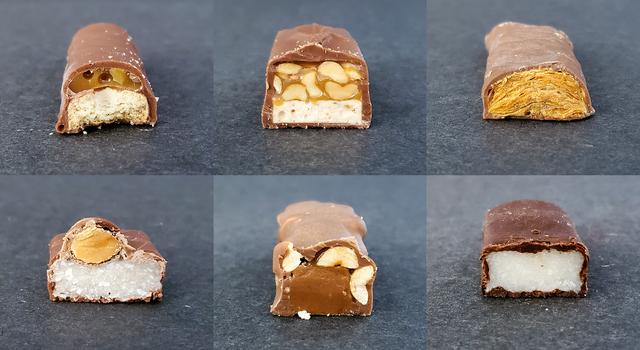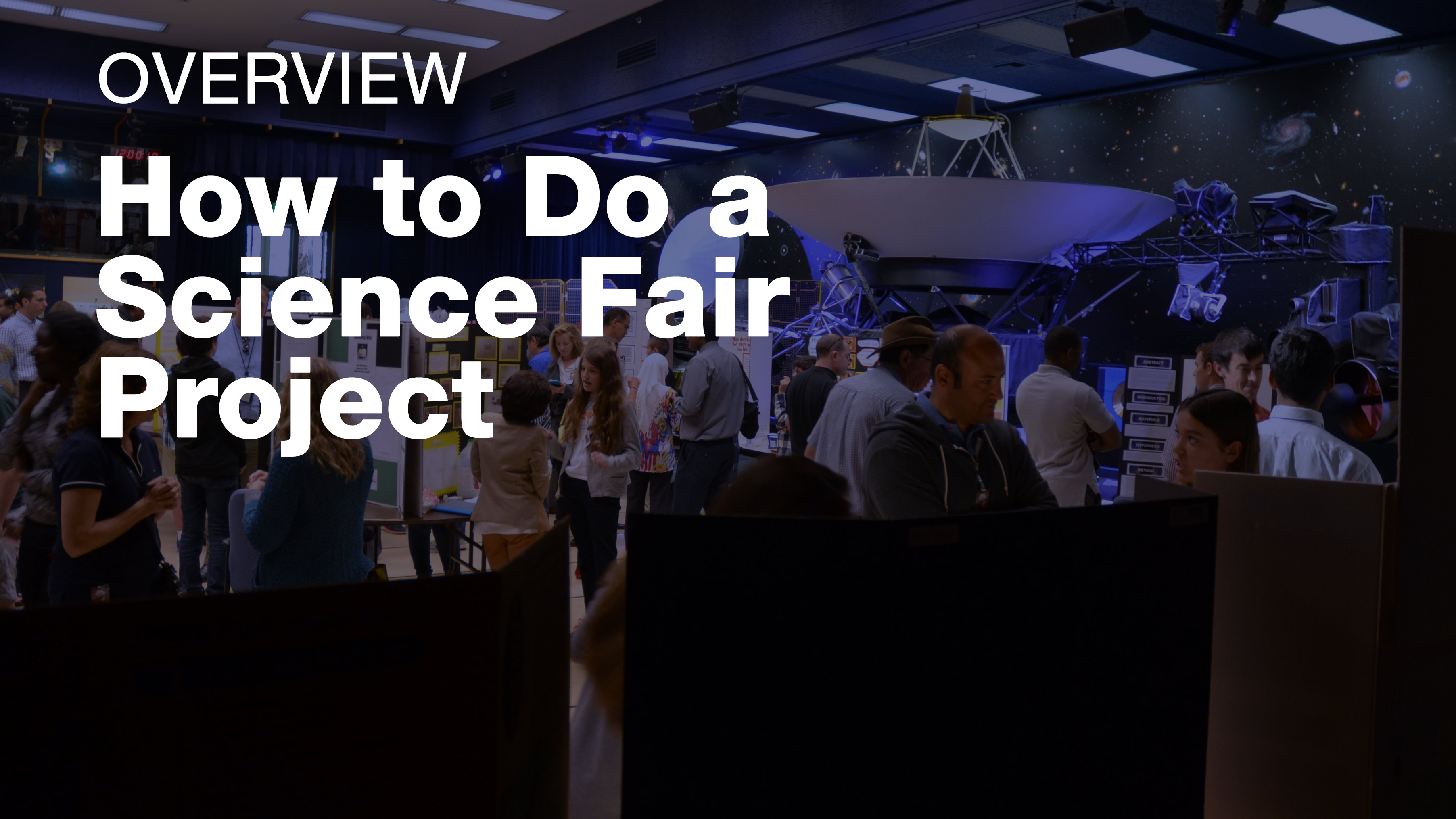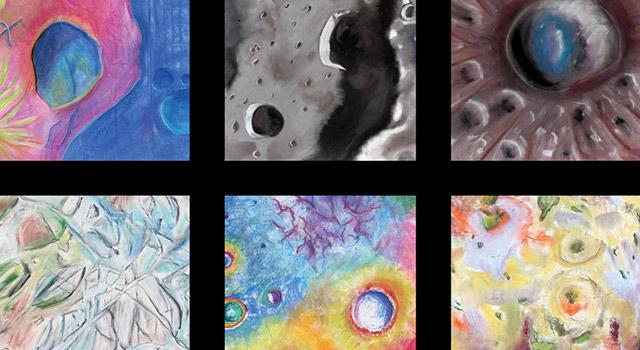Classroom Activity
Art and the Cosmic Connection
Overview
- For related resources in Spanish, see the Explora Más en Español section below.
Using the elements of art — shape, line, color, texture, value — learners of all ages create a beautiful piece of art while learning to recognize geologic and atmospheric features of solar system objects.
Materials
Management
- The same activity can be done using images of Mars or asteroids. Download the "Mars Edition" or "Asteroids Edition" materials from the list above, as applicable.
- If using pastels and this is an unfamiliar medium, consider watching these helpful YouTube videos featuring artists Monica and Tyler Aiello with tips and techniques for using pastels.
This video introduces students to the process of using the elements of art to understand and analyze beautiful NASA images from space. | Watch on YouTube
- For fixative, a pastel spray fix can be used; however, it is toxic and should only be used by a teacher or with older or experienced students, and only in a ventilated area. For other students, aerosol hairspray can be used. A light coating will help fix the pastel pigment to the drawing paper. Drawings can also be spray-fixed between layers if they get too heavily loaded with pigment or muddy so that students may work on top of the drawing. This process should be completed or supervised by the educator.
- The slide presentations use many beautiful NASA planetary images to illustrate concepts. They are flexible and scalable for various ages, experience levels, and time requirements. To prepare, teachers are encouraged to review the slides and make appropriate revisions for their particular students (see recommendations below). The slides include extensive presentation notes to guide teachers through the curriculum. The notes serve as a basic script and also include question prompts to encourage class discussion. There is also a Science Notes section with links to NASA web resources for educators who wish to expand their lesson plans.
Slide Presentation Recommendations: - Grades 3-5
- Break the presentation into several lessons.
- Lesson 1 (60-120 minutes)
- Present slides 1-3: Introduction to the Solar System.
- Have student teams create a KWL chart, and then build one for the entire class.
- Explore books to help students develop an understanding of celestial bodies.
- Lesson 2 (60-120 minutes)
- Have each child choose a favorite image. Introduce the elements of art.
- Choose two or three examples of each element of art from slides 14-2 to illustrate concepts, hiding the rest.
- Pastel Art Activity
- Suggest a focus on just shape, color and line to start.
- Children are able to appreciate value and texture, too, but try it in the context of kids' art creation to keep from overwhelming them with content/talk.
- Grades 6-10 (90 - 120 minutes)
- Encourage students to engage actively in the PowerPoint; noting features and writing down ideas are ways to keep participation lively.
- Use the PowerPoint notes to familiarize yourself with the content ahead of the presentation.
- Encourage interested students to use the many PowerPoint links to investigate further. It is also effective to have small discussions with students about art elements in their particular images in lieu of an extended presentation -- the art-making leads to rich scientific discourse!
Background
Art and the Cosmic Connection is a two-part interdisciplinary program developed by artists and educators Monica and Tyler Aiello.
For the past six decades, NASA has sent many space missions to the planets, moons and small bodies of our solar system. Spacecraft have acted as robotic explorers, capturing images of mysterious alien landscapes using a range of instruments: spectrometers, gamma ray neutron detectors, cameras. These pictures are studied using a variety of techniques including visual analysis, or "looking to understand." Similarly, visual artists depend on their sense of sight to guide their creativity. Both artists and scientists are keen observers of the natural world and engage in creative problem solving.
Artists utilize a system of concepts to make sense of visual information called the elements of art – line, shape, color, value, and texture. Scientists utilize analogous concepts, and the elements of art can be a valuable tool in planetary image analysis. Fusing art and science education proves an exciting and effective method for inspiring students to explore both disciplines.
Designed to engage students in space-science education by becoming artist explorers, the project incorporates the use of the elements of art as a tool to investigate and interpret the mysterious surfaces and atmospheres of our celestial neighbors. Students learn to analyze images of planets and smaller bodies such as moons, comets and asteroids with basic art concepts, which parallel scientific practice. The project includes a PowerPoint presentation and pastel art activity, which teachers can incorporate into their classroom curriculum or out-of-school time program. The project is scalable for different grade levels and blends artistic concepts with the investigation of planetary studies and storytelling. Utilizing art-making as a vehicle for scientific inquiry inspires and engages students, preparing them for a more rigorous exploration of space science and art theory, while gaining a broader perspective of their own planet, Earth.
The elements of art – shape, line, color, value, texture – offer an amazing way to make sense of planetary geology and atmospheres. The core curriculum connects the elements of art to planetary-image analysis. This simple concept shows how basic art forms can be sign posts for specific geologic or atmospheric processes – art depicts geologic or atmospheric structures. The elements of art can provide a road map for students to interpret planetary images. When there are exceptions to these rules, or if these rules have multiple interpretations, students can learn to use other factors to infer results, just like scientists. As these concepts build, students can combine these elements to understand more complex images, thus discovering planetary narratives and engaging in storytelling.
Elements of Art and Their Geology Matches
- Circle – When circles are viewed on a planetary image, it often indicates an impact feature, a crater. The size, shape, ejecta blanket (stuff thrown away or ejected from the impact site, material from both the impactor and the area impacted) and number of craters give important clues about the history of a planetary body. Sometimes circular features are volcanic or tectonic in origin, such as volcanic pancake domes found on Venus, for example.
- Blobs – Organic shapes, or blobs, can often be interpreted in two ways. Blobs frequently mean that one is viewing volcanic processes and lava flows. Blobby shapes can also indicate existing bodies of surface liquid (rivers and seas) or ancient bodies of liquid that left remnants of dried beds.
- Straight Lines – The presence of straight lines on a planetary body is often indicative of tectonic activity, including faults, ridges, cracks and mountains. On Earth, tectonic activity is thought of as a land phenomenon; it can also be present in icy worlds.
- Squiggly Lines – The presence of squiggly lines on the surface often tells us forces of erosion are at work, including that of liquid and wind.
- Color – In addition to visible light, scientists image planetary bodies in many different frequencies of the electromagnetic spectrum (infrared, radiowaves, X-ray, ultraviolet, etc.) They also create colorized images, adding and often exaggerating color differences to show subtle differences that the eye cannot detect otherwise, highlighting distinct aspects of a planet: topography, mineral composition, even gravity! Light and color are critical tools in interpreting and understanding planetary surfaces.
- Value – Value is the contrast of light and dark. Its scientific counterpart is called albedo - the measure of the reflectivity of a surface. (Think of snow vs.charcoal. Which reflects more light?). Value/Albedo is a critical tool for understanding a planetary body.
- Texture – Implied texture is the tactile quality of a two-dimensional surface, which we can see with our eyes, yet not touch. Images of planetary bodies are replete with various textures corresponding to eons of geologic history. Geologic processes build over time to create complex textures, which can be deciphered with the aid of the other art elements.
Procedures
Presentation
- Show the slide presentation – After reviewing the slide presentation and the presentation notes, show the slide presentation to your students. The slides have an introduction to the solar system, an overview of remote sensing and space exploration, and the core concept that describes planetary image analysis using the elements of art.
What Do You Know About the Solar System? – Begin by making a KWL (Know, Wonder, Learn) table on the board or chart paper. Take notes (or invite students to take notes) on the chart paper as students answer the following about the solar system:
- What do we know?
- What do we wonder about?
- What have we learned?
This forms a baseline of classroom knowledge, helps you be aware of your students' prior knowledge, and promotes inquiry. The KWL can be done in pairs or small groups initially to engage participants actively. If a student states something others are uncertain about, or you believe is inaccurate, post it in the Wonder section to return to for verification later.
- Science Inspires Art – The beginning of the presentation briefly introduces students to the painting and sculpture of project authors, Monica and Tyler Aiello. The husband and wife artist team collaborate with NASA and the scientific community in the development of their artwork and educational programs. Students are intrigued to view professional artists inspired by science, and are encouraged to become "artist explorers."
- Remote Sensing and Space Exploration – A brief discussion of remote sensing incorporated in the slides explains how NASA sends robotic explorers to planetary bodies and takes pictures of their surfaces. The images used are shown from the aerial or "birds-eye" view. The planetary images provided correlate to recent and current NASA missions to provide an opportunity to build student interest and excitement in space exploration. The beautiful and often unfamiliar images keep students engaged with the content.
- Elements of Art and Planetary Image Analysis – The core concept section relates how the Elements of Arts can be used to interpret planetary images. It is useful to have students define (or for the educator to review) the definitions of the Elements of Art. The remainder of the presentation includes sections for each of the Elements of Art and illustrates how these relate to specific geological processes using examples of gorgeous NASA images.
Art Activity
The Pastel Art Activity is designed to be a simple, yet fun and engaging way for students to explore the concepts they've learned from the PowerPoint presentation. Students enjoy making art in science class or exploring science in art class, depending upon how the project is taught. This reinforces the connections between the arts and the sciences and engages the students in an interdisciplinary learning environment. The art project can be taught during the same session as the presentation or in subsequent sessions. Tip: Pass out art supplies after you explain the activity so that students do not work ahead or get distracted.
- Have all students select a NASA planetary image to work from.
- Pass out paper.
- Ask students to make pastel drawings inspired by their image.
- Discuss or share images prior to the project, if desired.
- Ask students to pay special attention to the Elements of Art and how they relate to interpreting the geologic history of their image. They may choose to focus on one or two images.
- Explain that students do not have to make their artwork exactly like their image. They are making art and should feel free to interpret their image by altering their composition, cropping, color, orientation, etc. This is effectively done using question prompts, such as, "Do you have to make your artwork black and white like your image? No, feel free to explore color!" or, "Focus on the details that intrigue you."
- Encourage artists to explain their interpretation. For example, a student may have noticed especially bright areas and picked them out in a certain color.
Assessment
- At the conclusion of the art activity, display artwork and discuss the project. Here are two possible approaches.
- Conduct a gallery walk, where student art is hung up, with its inspiring image beside it, and students spend time viewing all the artwork. Ask all present, kids and adults, to offer observations about what strikes them about the drawing on sticky notes to leave for the artist. Examples: "Really nice example of texture!" "What is your interpretation of that feature?" "Your blending really made those colors pop out!"
- Break students into small groups (mix up the class so kids see others' work). Ask students to do a think-pair-share, where they write about their experience for a couple of minutes on a sticky note, share their ideas with a partner, and then with a small group.
- Reflect on the selected planetary image: interpret the geology of their image, and discuss how they used that image to inspire their artwork.
- Ask students to share something new they have learned from the activity with the entire group.
- Conclude by returning to the KWL chart to record:
- What have we learned?
- What do we wonder
- What new questions do we have?
Extensions
- NASA's Images of Change has over 300 pairs of images. Students can compare and contrast human and natural impacts on Earth using art as one method of understanding.
- Explore additional resources and materials related to this activity.








